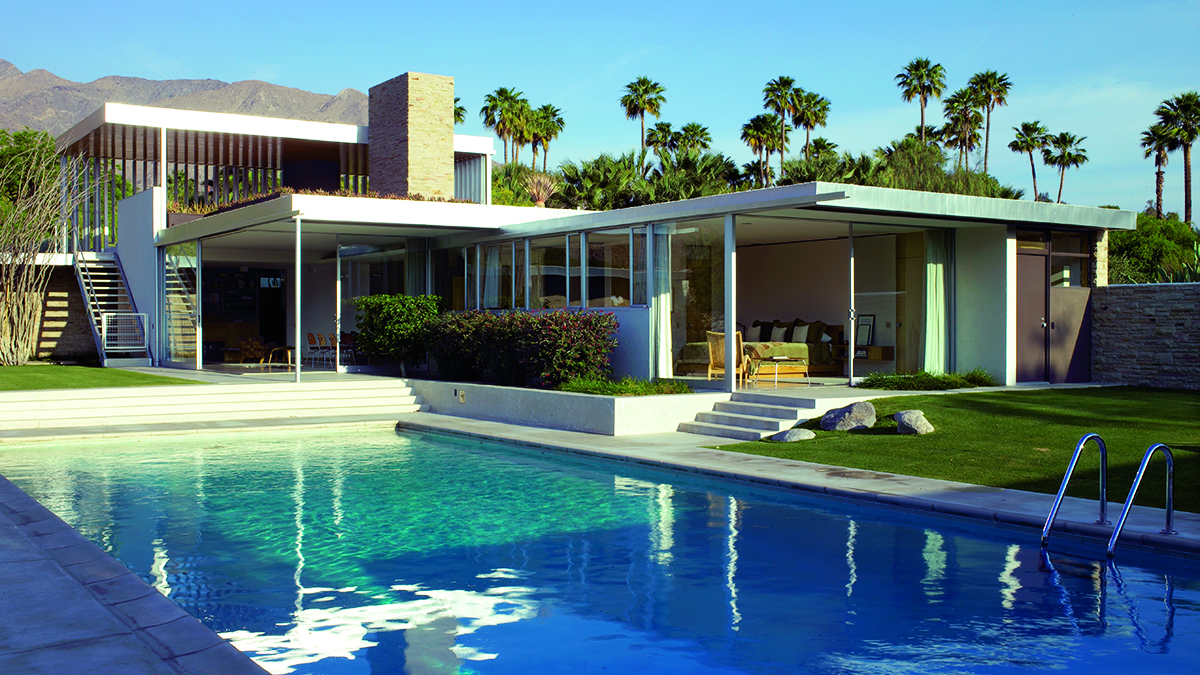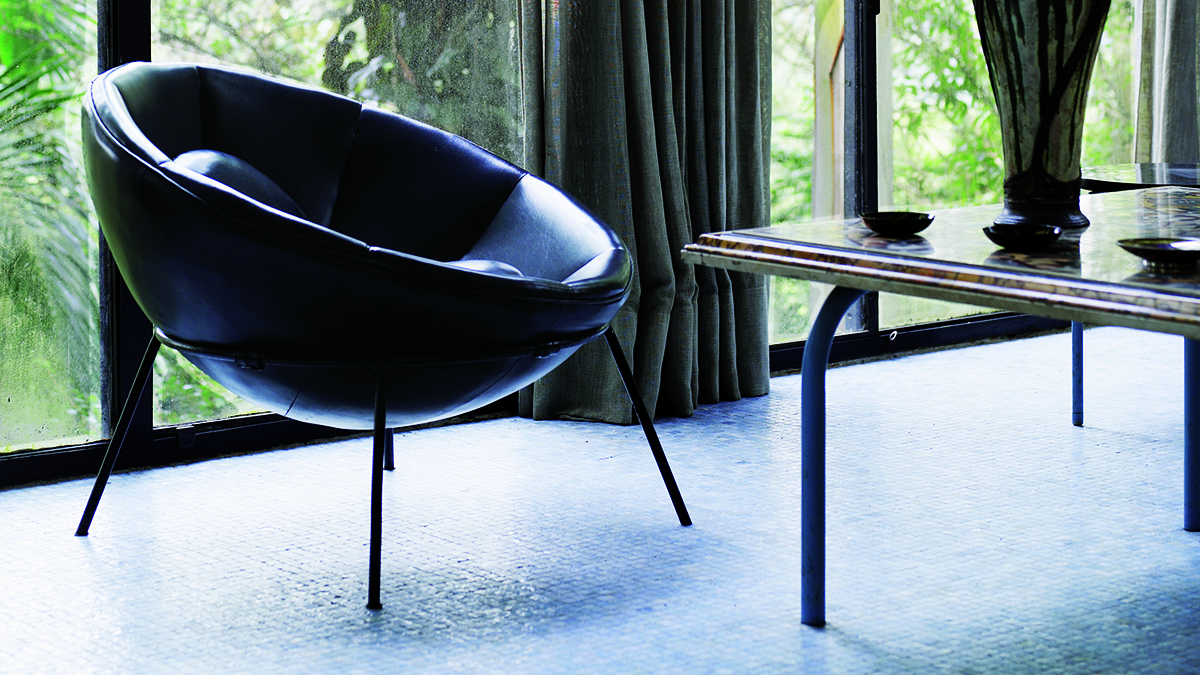The enduring appeal of Mid-century Modern
Dominic Bradbury discusses why, six decades on, we’re drawn to the design classics of the 1950s

Mid-century design seems to be everywhere these days. Walk down the high street, open an interiors magazine or step into the lobby of a designer hotel and the spirit of retro is usually close at hand. There is a wholesale renaissance in 1950s style in particular, with the resurgence of vintage patterns, textiles, ceramics, lighting and furniture that first made its way into the world around 60 years ago. Yet, to younger generations especially, the modernity of mid-century design still feels fresh, relevant and innovative.
In the world of furniture, above all, the retro look is all the rage. Many ‘contemporary’ collections pay homage to the mid-century style, while at the same time the longstanding furniture houses are busily going through their archives and reissuing designs by 1950s and 1960s pioneers, from Giò Ponti to Arne Jacobsen. The long list of recently reissued classics includes Lina Bo Bardi’s Bowl chair from 1951, Jacobsen’s Tongue chair from 1955 and Robin Day’s 675 chair, which was designed for the Royal Festival Hall in 1952.
Other pieces have never really gone away. Charles and Ray Eames’ plywood and fibreglass chairs have become perennial favourites, along with Eero Saarinen’s famous single-stem Tulip tables and chairs. Other iconic classics include Harry Bertoia’s Diamond chair and almost anything by Hans Wegner. These are designs that still speak to us of the contemporary, that still manage to feel fresh and engaging. Like sophisticated old friends, familiar and stylish, they are at home in a brand-new flat while also looking rather fine in the corner of an updated Victorian townhouse.
The Week
Escape your echo chamber. Get the facts behind the news, plus analysis from multiple perspectives.

Sign up for The Week's Free Newsletters
From our morning news briefing to a weekly Good News Newsletter, get the best of The Week delivered directly to your inbox.
From our morning news briefing to a weekly Good News Newsletter, get the best of The Week delivered directly to your inbox.
At the same time, furniture and prototypes from the 1950s have become highly collectible. Scan the web pages of Wright auction house in Chicago, for instance, and you’ll see not merely a procession of beautifully designed and crafted objects, but highly valuable collector’s items by the likes of Jean Prouvé and Carlo Mollino with look-again price tags.

Yet how is it that 60-year-old chairs and retro lighting still have such appeal? It’s a question that was always at the back of my mind when compiling Mid-Century Modern Complete – a survey of 1950s and 1960s design published by Thames & Hudson. It’s a complex question and one that has multiple answers.
In many respects, the pioneering designers of the 1950s and 1960s were defining modernity itself and shaping the way we live today. In the post-war years the ambition was to start afresh, to make it new; a consumer boom in America and reconstruction in Europe helped fuel manufacturing and the design industry itself. Production-line techniques that had only recently been used to churn out tanks and planes were adapted and refined to produce refrigerators, cars, radios and televisions, as well as toasters and chairs.
Everyone was looking for a fresh start, with consumers eager to turn their backs on austerity and embrace a new beginning. That included the home, which was transformed in the mid-century era, particularly in the USA. Modernist designers and architects, such as Mies van der Rohe, Richard Neutra and Craig Ellwood, perfected open-plan spaces, easy-access kitchens, inside-outside living and accessible informality. Such a style is commonplace and familiar now, but at the time was still radical and fresh, and at odds with the compartmentalised, highly formal home layout that tradition demanded.
A free daily email with the biggest news stories of the day – and the best features from TheWeek.com
These modern, open, airy spaces, full of light and warmth, cried out not just for show kitchens, pattern and colour, but also for a new generation of contemporary furniture, products and appliances. Charles and Ray Eames built on wartime experimentation and experience with plywood and began applying it to chairs, while in Scandinavia, Arne Jacobsen also embraced the material with open arms. Designers such as Poul Kjaerholm, Harry Bertoia and Warren Platner, meanwhile, used steel in unexpected forms.
1950s furniture tended to have a crafted, sculptural quality, with so many product designers working as artists and sculptors, too. Others were practising architects, creating furniture that would complement the modern spaces that were making their way from their drawing boards to reality.
So many 1950s pieces splice modernity and innovation with artistry and warmth, lending them a tactile beauty. Hans Wegner’s handmade timber furniture is a prime example, but Kjaerholm’s steel-framed chairs and sofas were also enriched by leather or cane seats, lending them an organic quality.
It was depth and warmth, above all, that made these pieces so desirable and enduring. There was a true measure of thought, with a focus on ergonomics and practicality on the one hand but also an appreciation of materials, finish, texture and craft on the other. These were – and are – modern classics. They still feel fresh and exciting, yet they are also familiar and unthreatening. They are no longer radical or avant-garde pieces but established icons, the presence of which in our homes can only be a symbol of good taste and learning. Who could criticise a Wegner Wishbone or a Kjaerholm PK22 lounge chair? They invite appreciation and a loving touch. Only the jealous and snide might comment on a lack of imagination in your choice.
Yet part of the appeal of the mid-century period is that, actually, there is a vast amount of choice, both in the form of reissues and vintage designs. Away from the big household names there is the work of many, many lesser-known talented and pioneering designers, such as Børge Mogensen, Bruno Mathsson and Jacob Kjaer, whose furniture is accomplished and endearing – and often more affordable than those mainstream names.
It’s extraordinary how much respect mid-century design now commands. As well as being an essential reference point for both architects and designers, it retains a powerful allure for buyers and collectors. With such breadth and depth, it continues to both seduce us and reassure us with its many charms, even as we push through the teenage years of the 21st century.
DOMINIC BRADBURY is a journalist and author who specialises in design and architecture. In his mid-century dreams, he’d love a pair of PK0 chairs by Poul Kjaerholm and a ready-made ceramics collection from Axel Salto. He is the author of Mid-Century Modern Complete (Thames & Hudson, £60); dominicbradbury.net
-
 Trump’s poll collapse: can he stop the slide?
Trump’s poll collapse: can he stop the slide?Talking Point President who promised to ease cost-of-living has found that US economic woes can’t be solved ‘via executive fiat’
-
 Sudoku hard: December 7, 2025
Sudoku hard: December 7, 2025The daily hard sudoku puzzle from The Week
-
 Codeword: December 7, 2025
Codeword: December 7, 2025The daily codeword puzzle from The Week